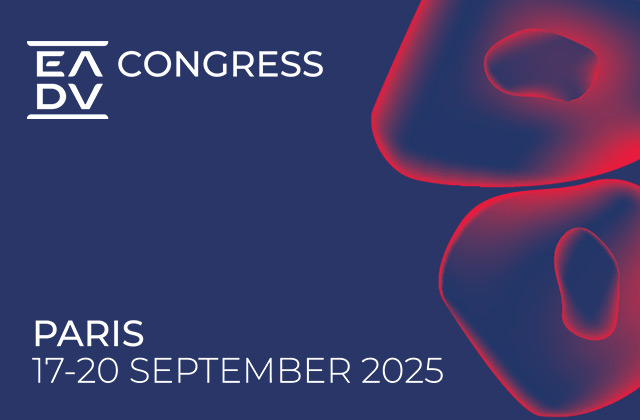
The CNS market is an incredibly broad and rapidly evolving space, covering a wide range of diseases, from the highly prevalent to the extremely rare. It spans all age ranges, from pediatric populations to the elderly. CNS diseases are treated by neurologists, psychiatrists, neuromuscular specialists, sleep specialists, primary care physicians (PCPs), and others. Given its large footprint, it’s impossible to provide a complete market outlook for CNS in anything shorter than book form. So, in this outlook for 2024, we focus on a small subset of key developments in the CNS space.
Below, we look at the current state of the broad CNS market and review the key expectations for 2024. We address Alzheimer’s disease, biomarkers, and advances in psychiatry in some detail. Finally, we look at the pain market and the evolving regulatory environment in shorter, “quick hit” fashion.
The Amyloid Hypothesis Debate in Alzheimer’s Disease
Status of the Amyloid Hypothesis
After numerous failures, the amyloid hypothesis got a boost in 2023 with the approval of Leqembi®, the first anti-amyloid therapy to show a beneficial impact on cognitive and functional decline in Alzheimer’s disease (AD). The magnitude of benefit observed in the Clarity AD pivotal study is not overwhelming, but it does lend credence to the amyloid hypothesis, which (at a high level) posits that aggregated amyloid in the brains of AD patients is responsible for the devastating effects of the disease. Donanemab, another anti-amyloid therapy, has a PDUFA date in 2024 and full approval is expected based on its positive Ph3 readout in 2023.
Nevertheless, the jury is still out regarding the extent of cognitive symptom improvement that can be achieved by targeting amyloid alone, and how to balance amyloid removal with the risk of amyloid-related imaging abnormalities (ARIA), a key adverse event associated with this class of therapies. It is clear that complementary therapeutic approaches will be required to enable profound, life-altering improvements for AD patients. Targeting tau, another protein that aggregates in the brains of AD patients, is one of these complementary approaches that we will be keeping an eye on in 2024 and beyond.
Key Questions Regarding Tau vs Amyloid…and More
As we look ahead to 2024, we have identified a few crucial questions that will inform how the AD landscape evolves. Table 1 includes a concise overview of these questions, highlighting the companies working in these areas along with key associated milestones.
Table 1 – Key Questions in the Alzheimer’s Disease Landscape, 2024
| What clinical benefit can lowering tau bring, either by itself or in combination with anti-amyloid therapy? Is tau the “winning target,” or will combination approaches be required to get to “game-changing” clinical benefit? | A number of anti-tau programs will have initial readouts or progress along their development plans in 2024, including:
|
| How can physicians identify patients that may benefit from (and are responding to) anti-amyloid and anti-tau therapies? | Key advancements that may impact patient selection and treatment response measurements for anti-tau therapies include:
|
| What is the impact on the overall healthcare system, including Medicare, of having high-cost disease-modifying therapies (DMTs) available for AD? | There are 6 to 7 million people living with AD today. If even a small percentage of those people initiate DMTs like Leqembi and donanemab, there will be a significant impact on PET scan capacity, neurologist capacity, and on Medicare. To this latter point - based on Eisai’s initial uptake estimate for Leqembi (100,000 individuals by year 3), annual Medicare spending on Leqembi would be $2.7 billion, which would make it the third most costly drug covered by Medicare Part B. While Leqembi uptake has been slow so far due to delays in reimbursement, the healthcare system and Medicare will need to be prepared to manage the potentially massive demands that will be placed upon it by these changes in the AD landscape. |
Table 1 References: Annovis’ buntanetap, BMS-986446, Biogen’s BIIB080, UCSF ATP Trial, AC Immune’s Ph 3 study, John Reed (J&J) quote, Roche Elecsys CSF Assay, Neurologist capacity limitations, Medicare Burden
Advances in CNS Biomarkers
Traditionally, there have been few reliable biomarkers in CNS diseases. In 2023, however, there were a few notable advances in CNS biomarkers, particularly in the arena of prognostic and treatment response biomarkers. For example:
- The FDA approved QALSODY® for SOD1 amyotrophic lateral sclerosis (ALS) based on neurofilament light chain (NfL) biomarker data. In March, a 9-member FDA advisory committee agreed unanimously that NfL levels could be a reasonable predictor of clinical benefit.
- Alto Neuro leveraged a machine learning-derived EEG biomarker to predict response to its novel therapy (ALTO-300) in major depressive disorder (MDD).
- Amylyx released data showing the effect of RELYVRIO (therapy for ALS approved in 2022) on neuroinflammation biomarkers, which were correlated with disease progression in ALS.
While biomarkers for prognosis and treatment response are invaluable tools for clinicians, biomarkers to enable more accurate diagnosis and better patient selection are equally (if not more) critical. Given the heterogeneous and progressive nature of CNS disorders, biomarkers that can confirm a diagnosis earlier in the disease enable patients to initiate treatment (if available) when there is a higher chance of meaningfully impacting disease progression.
One of the most notable advances in diagnostic biomarkers in 2023 was in Parkinson’s disease (PD). In a large study sponsored by the Michael J. Fox Foundation, researchers were able to detect misfolded alpha-synuclein (a toxic protein associated with PD) in living patients, including in people that aren’t exhibiting PD symptoms yet. This may help patients get better treatments faster and potentially avoid experiencing full-blown symptoms.
Despite recent advancements, significant challenges will remain in moving CNS into the era of “precision medicine.” Many clinicians remain skeptical of the correlation between key CNS biomarkers (e.g., beta amyloid, alpha-synuclein) and measures of clinical efficacy . We anticipate continuing pressure—supported by regulatory and payer efforts—to generate high quality clinical data correlating novel biomarkers with objective measures of clinical benefit, where feasible (e.g., this may not be possible in very rare CNS indications).
As biomarkers continue to gain traction in the CNS space, there are some interesting questions that will need to be addressed. For example: How will the advent of biomarkers impact neurologist workflows, particularly in indications that don’t currently include any sort of biomarker or genetic testing as part of the standard workup? And, to what extent will payer coverage and reimbursement be a barrier to expanded biomarker testing in CNS disorders? We look forward to gaining some insight on these questions in 2024 and beyond.
Advances in Psychiatry
There was a lot of buzz about psychiatry in 2023, where there is a massive unmet need for innovative treatments that provide meaningful relief without substantial, quality of life-impacting side effects. There were a few notable milestones last year across different drug classes and psychiatric indications. Here are a few highlights:
- Sage Therapeutics received FDA approval for Zurzuvae™ (zuranolone), a fast-acting antidepressant. While Sage was hoping for approvals in both postpartum depression (PPD) and MDD, the FDA only granted approval for PPD. Market sentiment is that Zurzuvae has high potential in PPD, but the breadth of uptake (e.g., extent of uptake beyond KOLs and centers of excellence) remains to be determined.
- Xenon Pharmaceuticals’ MDD therapy candidate, XEN1101, missed its primary endpoint in a Phase 2 trial. However, Xenon believes there is enough positive data to warrant more study and is exploring further development for XEN1101.
- Karuna Therapeutics had a positive Ph3 readout in schizophrenia for KarXT, its muscarinic agonist; the readout was consistent with prior Ph3 results and enabled the company to file for FDA approval in Sep 2023 (PDUFA in Q3 2024)
In addition, there was significant merger and acquisition (M&A) activity in psychiatry, even in a generally “down” year for biopharma. This reflects excitement about advancements in the space, particularly for novel mechanisms of action (MOAs). A couple of highlights are below:
- Abbvie announced its intent to acquire Cerevel, one of the biggest M&A deals in this space during 2023. Cerevel has a broad portfolio of small molecule therapies in development for Parkinson’s, schizophrenia, epilepsy, and other CNS indications
- As we were drafting this article, the news broke that BMS is planning to acquire Karuna Therapeutics.
We anticipate that psychiatry will continue to be a ripe area for M&A in 2024. Innovation in psychiatry is being driven by smaller companies that may not have the resources to address the unique commercial challenges in this space – challenges that include large patient populations, multifaceted symptomatology, and treatment decision-makers that span settings of care (e.g., inpatient, community mental health clinic, outpatient).
Exciting psychiatry catalysts to watch in 2024 include companies operating in the depression and schizophrenia arenas with the aforementioned muscarinic agonists, psychedelics, and other classes of drugs. Table 2 provides a few examples.
Table 2 – Catalysts to Watch in Depression & Schizophrenia, 2024
| Company | "Catalyst" Event & Likely Timing | Details |
|---|---|---|
| Acadia Pharmaceuticals | Ph3 readout expected in schizophrenia in Q1 2024 for pimavanserin (focused on negative symptoms) | Pimavanserin, an atypical antispychotic, is already approved in PD psychosis, so this readout will shed light on the extent to which atypical antipsychotics can impact other types of psychiatric symptoms (negative symptoms) that are less “prominent” but can be tremendously debilitating for patients. |
| Neumora Therapeutics | Ph3 readout expected in MDD in 2H 2024 for navacaprant | Navacaprant is a kappa opioid receptor (KOR) antagonist; KOR is a novel MOA for MDD that has significant advantages in tolerability compared to existing therapies, though the efficacy remains unproven. |
| Compass Pathways | Ph3 readout expected in treatment resistant depression (TRD) in mid-2024 for single-dose psilocybin monotherapy | Psychedelics have gotten significant attention as a novel way to treat disorders such as TRD and post-traumatic stress disorder (PTSD), which can be refractory to existing therapies; this readout will provide additional insight into the clinical value of this psychedelics, including whether a single dose is sufficient to make a meaningful impact for patients. |
“Quick-Hit” Topics: Pain and the Evolving Regulatory Dynamics in CNS
Non-Opioid Approach to Pain
While pain is not always thought of as a CNS indication, there have been some exciting advancements in this space that we felt are worth mentioning here. Traditionally, pain has been treated via opioids and other therapies that use similar MOAs. However, many of those therapies have serious limitations, mainly revolving around issues with addiction and tolerability.
To find an alternative, Vertex has been focused on a novel therapeutic approach: sodium channel blockers. The company had two positive phase 2 readouts in 2023 for VX-548, a blocker of NaV 1.8 —in acute pain and diabetic peripheral neuropathic pain—which have served as proof of concept. While the readouts were promising, more data is needed to determine how clinically meaningful targeting sodium channels can be. In 2024, Vertex expects to release phase 3 results in acute pain. If positive, the data will further bolster the validity of sodium channels as a pain target and start to shed light on how these drugs could shape the existing pain landscape.
Evolving Regulatory Dynamics
In recent years, the bar for regulatory success in high-unmet need CNS indications has been inconsistent. While certain data packages, such as BrainStorm’s submission in ALS, clearly didn’t meet the bar of clinical relevance (despite strong support from some ALS patient groups), other submissions that were accepted—such as Sarepta’s Elevidys for Duchenne muscular dystrophy (DMD)—have been controversial (to say the least!).
The FDA has also been more aggressive in pushing for completion of confirmatory trials for drugs approved under the accelerated approval pathway. However, the implications when these confirmatory trials do not succeed have not yet become clear.
There are some CNS-related regulatory decisions to watch in 2024 that may shed light on how the FDA will operate in this space. Keep an eye out for:
- The FDA’s decision on broadening Elevidys’ indication (as well as its current accelerated approval); at the 2024 JPM conference in early January, Peter Marks, FDA’s chief gene therapy regulator, suggested that Elevidys may receive full approval despite the failure of its confirmatory study, indicating some leniency given the debilitating nature of this pediatric disease
- The FDA’s response to the anticipated readout for the RELYVRIO (Amylyx’ ALS drug) confirmatory study. Specifically, how will FDA respond if the primary endpoint is not met?
The regulatory environment is a big topic and we’ve only scratched the surface here. In a future white paper, we’ll dig into it in more detail. In fact, we’ll be publishing a series of papers on the CNS market during 2024. To stay up to date on our publications in CNS and other areas, follow Blue Matter on LinkedIn or check our blog and Resource Center frequently.






